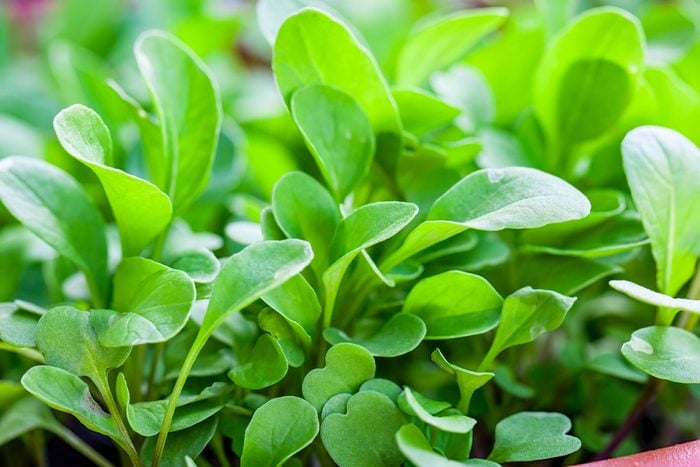This Is the Healthiest Vegetable, According to a Decade of Research
Updated: Apr. 13, 2024

It stereotypically makes an appearance on dainty tea sandwiches, but experts say this micro-green deserves a mega spot in your diet.
There’s nary a leafy green that doesn’t do your body good, but it turns out that one is far mightier than all others. This one can be common to miss in the produce section, or easy to mistake for arugula or sprouts.
But just one taste will set you straight: The bite in this green makes it something unique, and new research suggests that flavorful punch packs the pinnacle of nutrition.
Get The Healthy @Reader’s Digest newsletter
The nutritional power of watercress
In 2014, the Centers for Disease Control and Prevention launched an initiative to pinpoint powerhouse foods that science has linked with a lower risk of chronic diseases. The CDC’s research centered on determining which foods offered the most health benefits relative to their calorie content. They focused on 17 vital nutrients, including vitamins C, D, E, and K, and essential minerals such as calcium and potassium.
Among the foods that were evaluated, watercress—a member of the cruciferous family—topped the charts. Watercress is rich in essential vitamins, minerals, and potent antioxidants and offers more nutrition-per-calorie than most foods. This means you receive more significant health benefits for each bite of watercress you take.
The two other fiercest contenders were Chinese cabbage and kale.
More watercress health benefits to consider
Cleveland Clinic nutrition expert Julia Zumpano, RD, LD, says: “Study after study is documenting watercress’ amazing benefits. Researchers are studying its potential in reducing smoking carcinogens, turning off breast cancer signals, and alleviating physical stress from workouts.”
Recent research, such as a 2021 biochemistry study, has suggested watercress may boost bone health, minimize DNA damage, and provide anticancer advantages. This petite green is loaded with antioxidants—meaning watercress also helps combat oxidative stress, which plays a role in aging and various chronic illnesses.
Eating This Berry Can Improve Your Heart & Brain Health in 8 Weeks, New Study Says
How to add watercress to your diet
If you’re wondering how much watercress to include in your diet, another Cleveland Clinic dietitian, Amber Sommer, RD, LD, suggests that unless you have particular health concerns (such as being on blood-thinning medications like warfarin), you should aim for roughly 2.5 cups of vegetables daily. This includes cruciferous vegetables, like watercress, broccoli, cabbage, and cauliflower.
Sommer says: “One cup of cooked or raw broccoli is one serving, but for the leafy greens, you want to go higher. About two cups of those make one serving.” Keeping these guidelines in mind can help you effectively incorporate watercress into your meals.
Zumpano acknowledges that “people don’t always know what to do with watercress.” The nutritional value makes it worth testing out a few ideas from The Healthy @Reader’s Digest:
- add watercress to a fruit smoothie
- blend watercress into a homemade pesto sauce
- drop a handful into a lunchtime salad
- garnish watercress on a filet of wild fish
- top a chicken salad or egg salad sandwich on whole grain bread (look for at least three grams of fiber and zero added sugar per slice, and only whole-food ingredients)
- stir it into a heart-warming soup
For wellness updates delivered daily, subscribe to The Healthy @Reader’s Digest newsletter and follow The Healthy on Facebook and Instagram. Keep reading:
